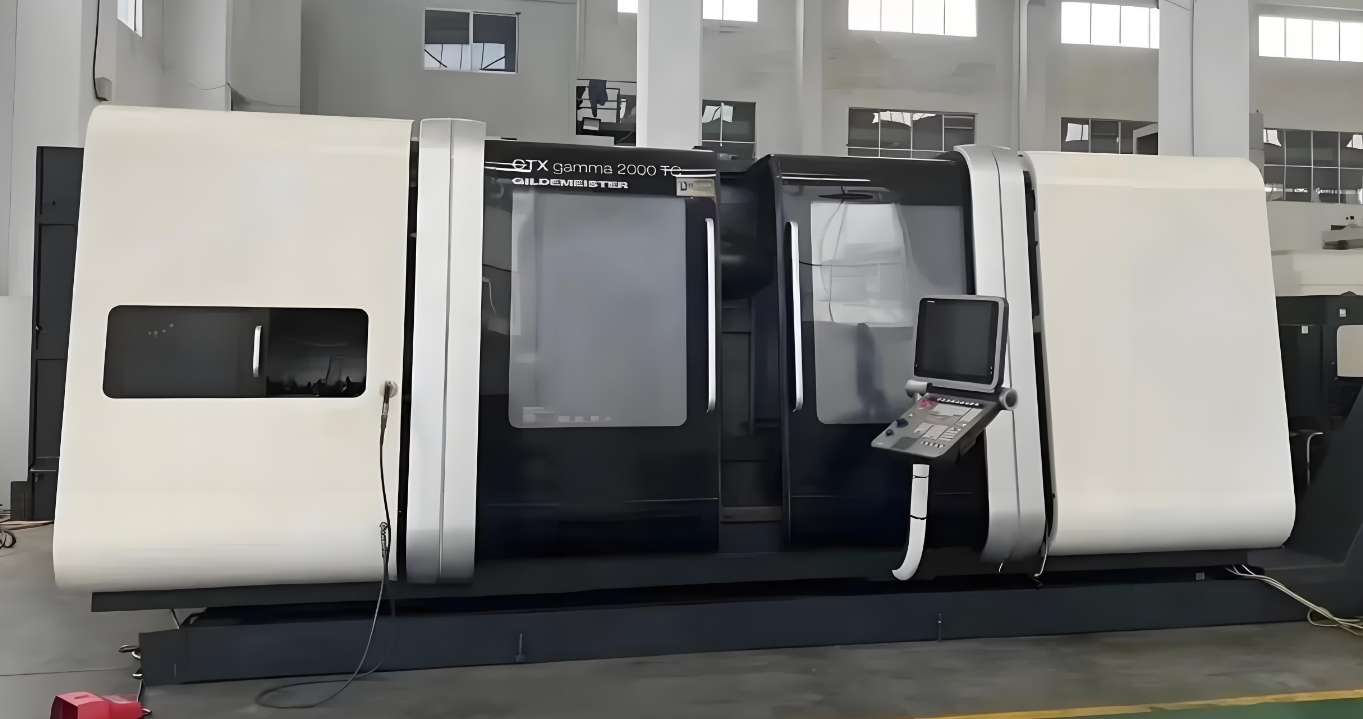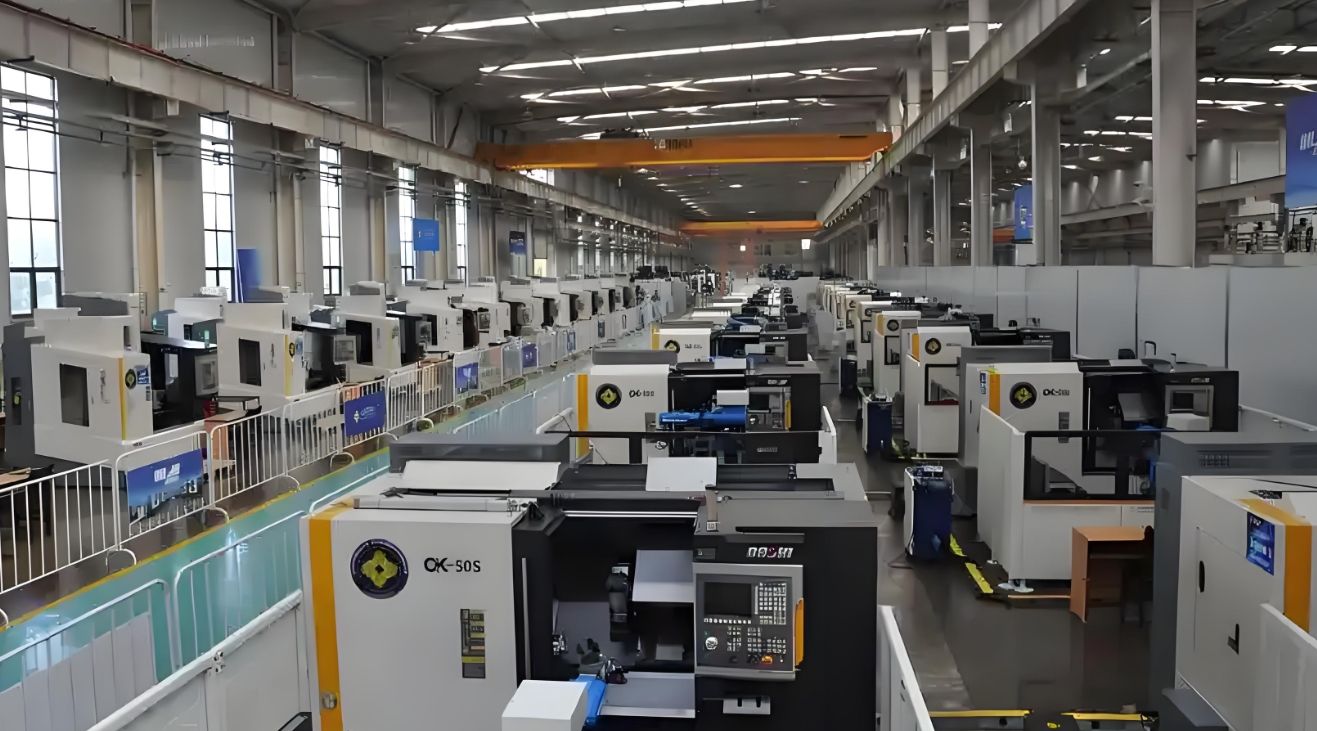
Driven by high-end manufacturing and the"Industry 4.0"wave,the core equipment in the field of machining—machining centers and turning-milling compound machines—are undergoing profound changes.Their development trends are mainly reflected in the following key directions:
1.Five-Axis Linkage:From High-End Exclusive to Widespread Application
• Technology Demystification and Cost Optimization:Five-axis linkage technology is no longer limited to cutting-edge fields such as aerospace and military.Thanks to the advancement and cost reduction of control systems,drive technologies,and key components(such as direct-drive motors,high-precision rotary tables),five-axis machining centers are accelerating their penetration into a broader range of industries such as mold manufacturing,medical devices,and precision parts.
• Capability Leap:Five-axis linkage enables the complete machining of complex surfaces and irregular structures in one clamping,greatly reducing the number of clampings and cumulative errors,significantly improving machining accuracy,surface quality,and production efficiency,becoming a powerful tool for solving complex part manufacturing.
2.Compounding:Function Integration Shapes All-Powerful"Manufacturing Units"
• In-Depth Evolution of Turning-Milling Compounding:Modern turning-milling compound centers have transcended the simple concept of"turning+milling."Top-tier equipment integrates various process capabilities such ashigh-precision turning,multi-axis linkage milling,deep-hole drilling and boring,precision grinding,gear processing,and even laser processing/additive manufacturing.Power turrets,Y-axis,B-axis rotation,sub-spindles,and automatic guide tailstocks have become standard features in high-end models.
• "One Clamping,All Done":The ultimate goal of compounding is to maximize the completion of all or most processes of complex parts in one clamping.This eliminates the positioning errors brought by multiple clampings,improves overall accuracy and consistency,and significantly shortens the manufacturing process,enhancing efficiency and reducing work-in-process inventory.
3.Intelligence:Data-Driven Manufacturing Future
• Deep Integration of Industry 4.0/IoT:Machine tools become nodes in the smart factory network.Standard sensors collect a vast amount of data such as spindle load,temperature,vibration,and position accuracy in real-time,uploading it to the cloud or edge computing platforms via industrial Ethernet(such as OPC UA,MTConnect).
• Intelligent Application Empowerment:
• Predictive Maintenance:Based on operational data models,it provides early warnings of potential failures such as spindle bearing wear and guide rail abnormalities,changing passive maintenance to proactive maintenance and maximizing equipment utilization.
• Process Monitoring and Adaptive Control:Real-time monitoring of machining status(such as tool wear,cutting force fluctuations),automatically adjusting parameters such as feed rate and rotation speed to ensure machining stability and quality consistency.
• Process Optimization and Digital Twin:Using AI to analyze historical machining data to optimize cutting parameters;building digital twin models of machine tools and machining processes for virtual debugging and process simulation,shortening the trial production cycle.
4.High-Speed and High Precision:Pursuing the Limits of Efficiency and Quality
• Continuous Performance Improvement:Spindle technology continues to break through,with ultra-high speeds(tens of thousands of revolutions per minute)becoming the norm for high-end machining centers;linear motor drives bring extremely high feed rates and accelerations(>1G),significantly reducing non-cutting time.
• Precision Foundation Becoming More Solid:Advanced technologies such as thermal deformation compensation(machine tool temperature field modeling and real-time compensation),active vibration suppression,nanometer-level resolution grating scales,and hydrostatic guides are widely applied,ensuring that equipment can maintain micrometer or even sub-micrometer level positioning accuracy and repeat positioning accuracy even at high speeds.
5.Automation Integration:Building Unmanned/Few-Person Manufacturing Islands
• Seamless Automation Interface:Equipment design fully reserves automation interfaces(robot/AGV interfaces,standardized fixture bases,centralized worktable exchange systems),facilitating rapid integration of loading and unloading robots,automatic guided vehicles,and vertical warehouses.
• Core of Flexible Manufacturing Systems:Machining centers and turning-milling compound machines are the cornerstone of flexible manufacturing systems(FMS)and flexible manufacturing units(FMC).In conjunction with automated tooling fixtures(zero-point positioning,hydraulic/pneumatic quick change)and advanced production scheduling systems,they can efficiently and flexibly meet the production needs of multiple varieties and variable batch sizes,significantly reducing labor dependence.
6.Green Manufacturing:Sustainability Becomes a Hard Indicator
• Energy-Saving Design:Using high-efficiency motors,frequency conversion drive technology,and energy recovery systems(such as regenerative braking energy feedback to the grid)significantly reduces standby and operating energy consumption.Optimizing structural design to reduce the mass of moving parts,lowering drive power consumption.
• Environmental Protection Processes:The application scope of near-dry processing technologies such as dry cutting,minimum quantity lubrication(MQL),and low-temperature cooling air has expanded,significantly reducing or eliminating the use of cutting fluid,lowering waste liquid treatment costs and environmental burden.
• Long Life and Low Loss:Applying more wear-resistant and corrosion-resistant environmental protection coatings and materials extends the life of key components,reducing replacement frequency and resource consumption.
The development of machining centers and turning-milling compound machines is a process of multi-dimensional deep integration ofcompounding,intelligence,precision,automation,and greening.In the future,single-function"machining equipment"will accelerate the evolution into"intelligent manufacturing units"that integrate multiple processes,intelligent decision-making,autonomous optimization,and network collaboration.This will not only reshape the boundaries of production efficiency and precision but also profoundly change traditional manufacturing models,laying the core equipment foundation for building more flexible,efficient,and sustainable future factories.Mastering these trends is crucial for manufacturing enterprises to enhance their core competitiveness.
• According to Gardner Intelligence reports,the global sales growth rate of five-axis machining centers has continued to exceed the overall machine tool market(an average of about 10%in recent years).
• Mainstream high-end turning-milling compound centers can achieve turning precision level IT4,and milling positioning accuracy within±0.002mm.
• Using MQL technology can reduce the use of cutting fluid by more than 90%,reducing the overall processing cost by about 15%.